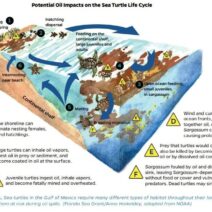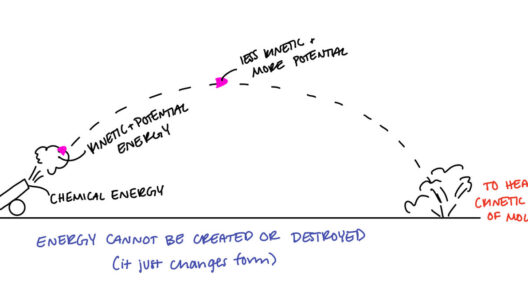In an era marked by escalating concerns around climate change, transportation contributes significantly to greenhouse gas emissions. Therefore, adopting practices that promote energy conservation in travel not only minimizes individual carbon footprints but also supports the collective effort toward a sustainable future. Below, we explore various strategies to make transportation greener, encapsulating the essence of green travel made easy.
1. Understanding the Carbon Footprint of Transportation
Transportation is one of the primary sources of greenhouse gas emissions globally, encompassing automobiles, aviation, and shipping. A comprehensive understanding of one’s travel choices and the associated emissions is pivotal in identifying energy conservation opportunities. Individuals can utilize tools such as carbon calculators to analyze the ecological impact of their travel methods.
2. Embrace Public Transportation
Utilizing public transportation systems, such as buses, subways, and trains, significantly curtails individual car usage, promoting mass transit’s efficiency. These systems, when well-designed, can accommodate numerous passengers at once, substantially reducing the per capita energy consumption. Moreover, investing in robust public transport infrastructure helps cities become more accessible and less dependent on fossil fuels.
3. Opt for Non-Motorized Travel
Walking or cycling are transformative choices that not only limit energy consumption but also engender healthier lifestyles. By eschewing motorized transport for shorter distances, individuals can contribute to reducing vehicular emissions. For regions that are bike-friendly, cycling can serve as both a practical mode of transportation and an enjoyable form of recreation.
4. Carpooling and Ride-sharing
Carpooling and utilizing ride-sharing services allow travelers to share their journeys with others, significantly lowering the number of vehicles on the road. This concept effectively maximizes vehicle capacity, thus optimizing fuel use. Additionally, various platforms now facilitate these connections, allowing for effortless coordination among users.
5. Choose Fuel-efficient Vehicles
If driving is necessary, selecting vehicles that offer superior fuel efficiency is paramount. Hybrid and electric vehicles are rapidly gaining traction due to their ability to operate on alternative energy sources, reducing reliance on fossil fuels. Furthermore, advancements in technology have led to the development of vehicles that boast improved aerodynamics, weight reduction, and energy conservation technologies.
6. Maintain Vehicles Optimally
For those who already own a vehicle, regular maintenance is critical. Ensuring the engine is tuned, tires are properly inflated, and oil is changed in a timely manner can enhance fuel efficiency and minimize emissions. A well-maintained vehicle operates effectively, thereby consuming less fuel and releasing fewer pollutants.
7. Sustainable Aviation Practices
Aviation often incurs considerable energy use; however, air travel can also be made greener. Travelers can assess airlines based on their commitment to sustainable practices, such as utilizing more fuel-efficient aircraft, implementing efficient flight paths, and investing in carbon offsetting programs. Whenever feasible, consider alternatives such as trains, which often present a more environmentally friendly option for intercity travel.
8. Telecommuting and Remote Work Solutions
Incorporating telecommuting practices not only reduces energy consumption associated with daily commuting but also fosters work-life balance. Companies adopting flexible work arrangements can diminish the overall necessity for transportation, resulting in decreased emissions and promoting a culture of sustainability.
9. Explore Carbon Offsetting Options
Engaging in carbon offsetting initiatives can be an effective way to counterbalance unavoidable emissions from travel. Purchasing carbon credits supports projects that aim to reduce greenhouse gases, such as renewable energy projects or reforestation efforts. Being proactive in offsetting the impacts of one’s travel reinforces a commitment to environmental stewardship.
10. National and Local Policies to Support Green Travel
Governments play a crucial role in the promotion of sustainable transportation practices. Policies that incentivize the use of public transit, invest in infrastructure for biking and walking, and promote the development of electric charging stations can significantly reshape travel behaviors. Active engagement in local governance to advocate for such initiatives can amplify voices in favor of a greener transportation system.
11. Educational Initiatives and Community Involvement
Community involvement is indispensable for fostering a culture of sustainability in transportation. Educational initiatives geared toward enhancing awareness of energy consumption and encouraging sustainable practices can empower individuals to make informed choices. Engaging in local events, workshops, and campaigns promotes collective action and emphasizes the importance of energy conservation in transportation.
12. Leverage Technology and Innovation
Technological advancements are integral to the evolution of green travel. Innovations such as electric scooters and rideshare apps enable users to minimize their transportation impact while providing convenient alternatives. Additionally, smart city technologies that optimize traffic flow can reduce congestion, leading to decreased fuel consumption and improved air quality.
By adopting these energy conservation methods in transportation, individuals and communities can contribute to a more sustainable world. Each choice made, whether large or small, culminates in substantial changes. As society progresses toward a greener future, collective endeavors in reducing transportation’s environmental impact will pave the way for a healthier planet.







